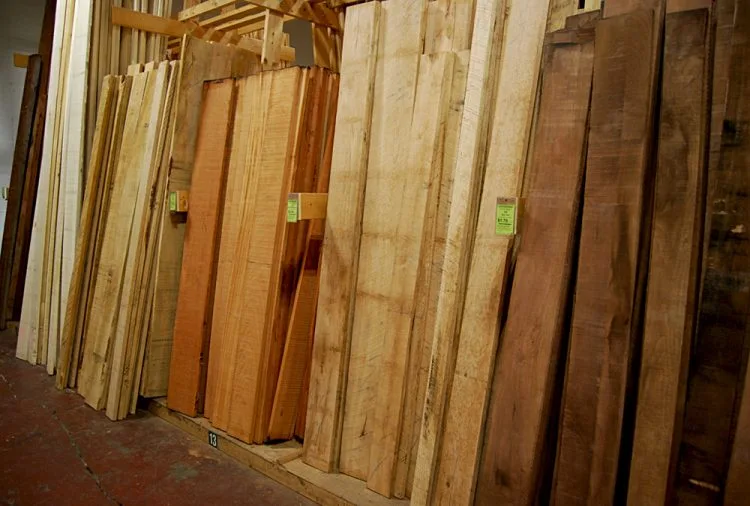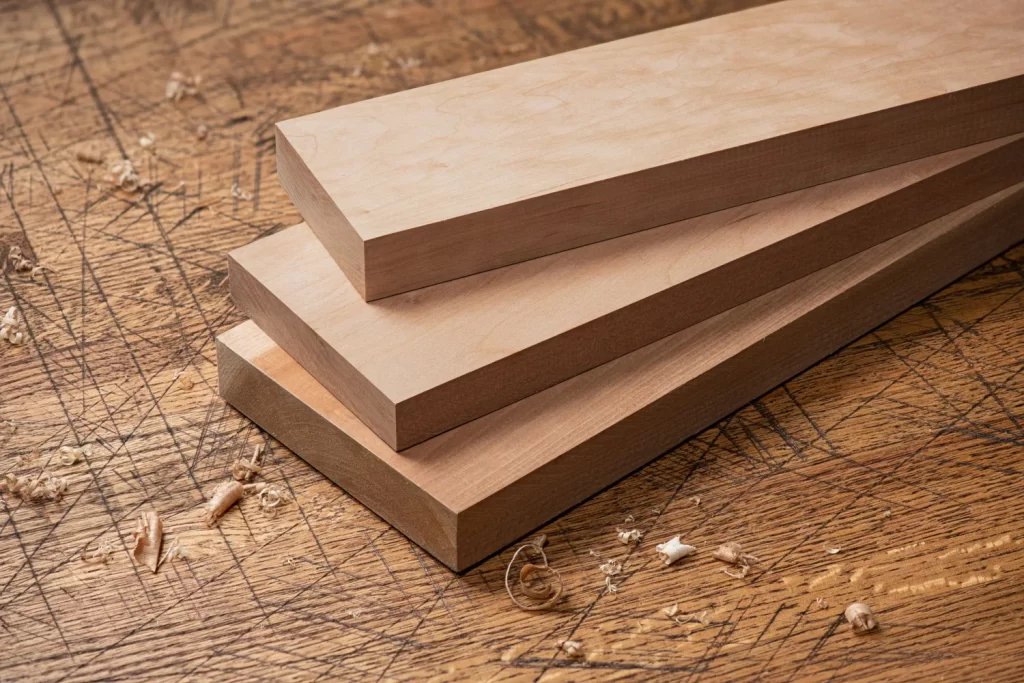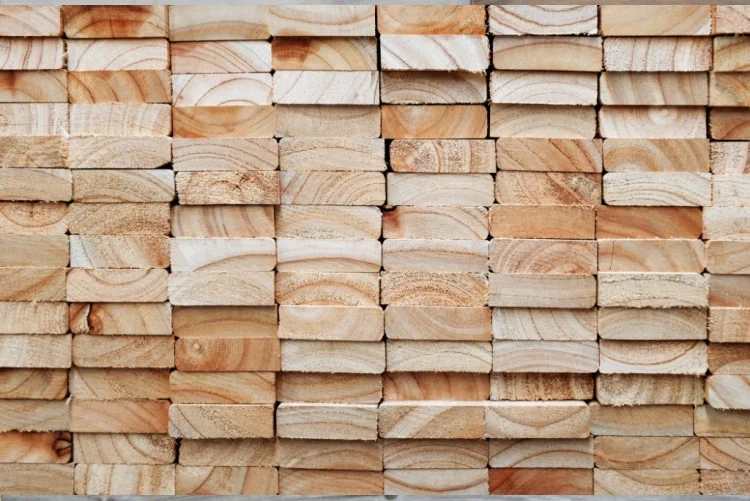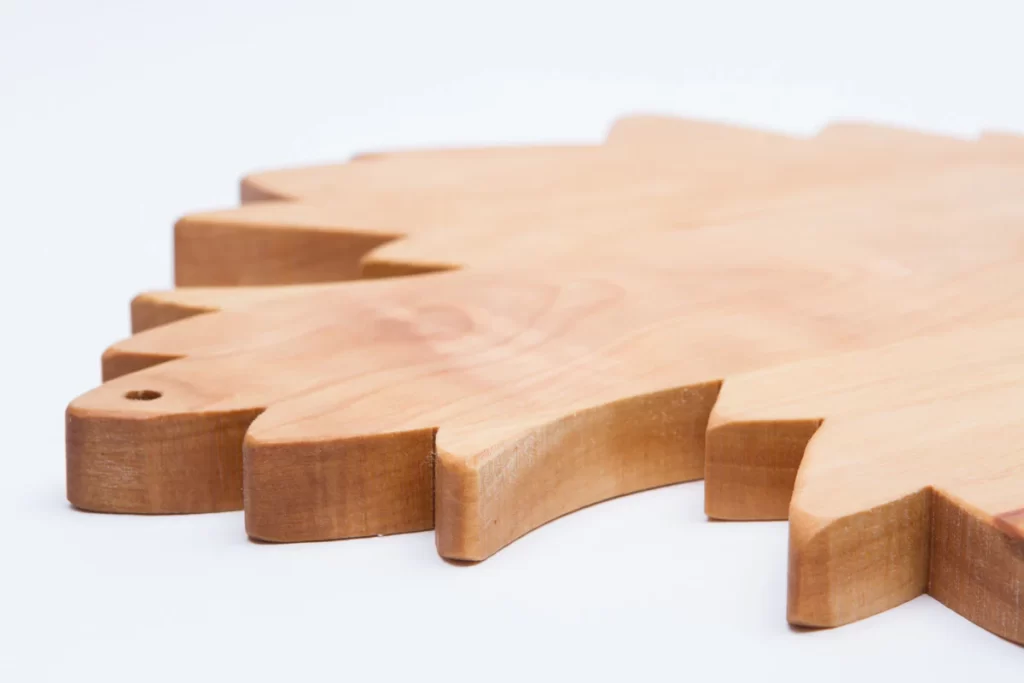Looking for the best possible yet cost-effective solution for construction, joinery, and furniture-making purposes? Whitewood is a type of wood you can often find in many residential improvement stores. However, whitewood is known for its light-colored softwoods, which can be achieved from pale trees such as American tulip, spruce, pine, fir, and many other coniferous species of trees.
So, what is a whitewood board? Whitewood board is actually a general name provided to a versatile, lightly-colored wood panel that often has origins in softwood. Well known for being lighter, almost white, with a smooth texture.
It’s a popular choice if you want to build furniture, cabinetry, shelving, and decorative interior applications. In this blog, we are going to briefly discuss what a whitewood board is, what it is used for, its advantages, types, and everything, so you can have full knowledge about it.
Lumber Used For Making Whitewood Boards
A study shows that globally, more than 40% of softwood board production, which includes whitewood, comes from SPF lumber species(spruce, pine, and fir). The whitewood used for making boards is of several types. Some people use whitewood from a spruce tree, while some use white oak wood. Although you can choose whatever is best for your project. Now, we are going to discuss all the types of whitewood used for making boards.
Spruce Whitewood Board: Spruce is one of the most popular and common sources of whitewood boards. It’s known for its lightweight yet strong structure. Although it is slightly softer compared to pine, it is equally strong in general. Spruce whitewood is considered a good choice for furniture, cabinetry, and interior paneling due to multiple factors such as affordability, workability, and aesthetics. Its pale cream, straight, and fine-grain texture is also one of the reasons for its popularity.
One thing to note, spruce whitewood is not naturally rot-resistant, but it performs well for indoor applications such as furniture, shelving, trim, paneling, and other decorative elements. It can also be repaired and treated for extended durability.

- Characteristics:
- Spruce whitewood is available from pale cream to light yellow color
- It has straight and fine grain, making it easy to cut, shape, and sand.
- It falls under the lightweight category but is moderately strong
- It is much more affordable and cheaper than many hardwoods available
Pine Whitewood Board: Wood from pine trees is another good option for whitewood boards. Pine wood is mostly recognized for its versatility, adaptability, and affordable rates. It is available in off-white to pale yellow hues. It also has visible knots on it, giving it a rustic appearance which evokes a sense of naturalness, simplicity, and builds a connection with the outdoors of your structures.
Pine whitewood boards are easy and simple to sand, cut, paint, or stain, so if you are looking forward to using them for your framing, general construction, carpentry, furniture making, or other DIY projects, this is the best option for you.
- Characteristics:
- Light cream to pale yellow appearance with distinct knots on it.
- It has a soft texture and accepts paint, stain without any difficulties.
- Due to their softness, they tend to dent and scratch easily.
- Generally, pine whitewood boards are cheaper and more affordable than spruce.
Fir Whitewood Board: Fir can be characterized into two species: Douglas-Fir and Hem-Fir.
- Douglas fir is one of the strongest softwoods that can be found in the western hardwood group, and its color ranges between white and yellow. It will have sharp, clear grain, as well as straight grain, because in each layer of its growth, it has a definite difference between the lighter, softer early-wood and the darker and denser latewood. The straight grain makes the difference in that, rather than twisting or spiraling, the fibers run parallel to the lengthwise of the tree.
Despite being stronger than it is heavy, Douglas Fir has a high strength-to-weight ratio, which makes it more preferable to be used in making frames of structure, door frames, as well as heavy-duty furniture, and so on.
- In North American lumber yards, Hem-Fir is the most common category and wood type. These boards are created from a wood that is a combination of western hemlock and the true firs, such as Noble, California Red, Grand, Pacific Silver, and White fir.
It provides a light color, from pale yellow to light brown. It has a smooth and straight grain. This type of wood is, however, primarily recognized due to its sizeability, strong and neat outlook, hence it is the most appropriate choice to be used in your construction, joinery, and interior finishing work.
- Characteristics Of Douglas Fir:
- It offers a pale yellow-white appearance with straight grain.
- It is highly stable and has more strength.
- It is much more durable and strong in both interior and exterior applications.
- It is commonly used in doors, windows, beams, and other heavy furniture.
- Characteristics Of Hem-Fir:
- It has a light cream to soft-yellow color appearance.
- It has a smooth grain, which provides a refined and much better look.
- It is easy to saw, nail, glue, and conduct other machinery and finishing work.
- You can easily paint or put a stain on it to achieve different looks.
Hardwood Used For Making Whitewood Boards
You might be thinking that whitewood is made using softwood species like spruce, fir, and pine, right? But you would be surprised, hardwood is also used for the making of whitewood boards. These are not considered the best option for whitewood, but due to their sapwood characteristics, they are also used for making whitewood boards. So, if you are looking forward to a premium, luxurious, or high-quality whitewood board, hardwood can also be an option.
Here are some of the most common types of lumber from hardwood species used to make whitewood boards.
TulipTree Whitewood Board: Also known as yellow poplar is one of the most popular lumber used for whitewood board making. It is a lightweight hardwood with a pale cream to yellowish tone. This type of whitewood is very stable and smooth, making it a perfect option for surfaces that need to be painted. Yellow poplar or tuliptree wood is primarily found in the parts of the eastern United States and southeastern Canada. Research done by AHEC shows that the growing stock of tulipwood is 1.12 billion cubic meters, which highlights more than 7.7% of the total U.S growing stock.
Although it is not as strong as oak but oak is a hardwood, tulipwood is affordable and stands out as one of the best choices for interior furniture, cabinet interiors, frames, panels, and more.
- Characteristics:
- It offers a pale cream to light yellow with greenish streaks type of texture.
- It is well-known for its smooth, straight, and even grain, making it best for painting purposes.
- It is lightweight, making it easier to cut, shape, and finish using equipment.
- Painting, staining, and enamel work well, making it ga ood option for decorative applications.
Cherry Whitewood Board: Cherry Whitewood Board: Cherry wood is yet another variety of hardwood which can be used to produce the white woodboards. In addition to cherry wood being uncommon as the material used to make whitewood boards, cherry wood can be utilized in the formation of whitewood boards. A hard cherry tree is known to have reddish-brown heartwood and creamy white sapwood. Cherry sapwood has a pale yellowish-white to light cream appearance, making it more suitable for whitewood board crafting.
Cherry wood is expensive compared to softwoods such as spruce, pine, etc, and is generally prized for its dimensional stability property. It does not warp, shrink, and is simple to work with machines and hands. It is primarily applied to high-grade and quality furniture, cabinetry, paneling, and top-quality millwork.
- Characteristics:
- It has moderate to good resistance to decay and stays stable over time.
- It is strong and rigid and can handle a lot of load.
- You can do finishes using sand, machines, and your hands without any difficulties.
- Its sapwood is used for whitewood board making as it offers a pale cream to light yellow appearance.
Maple Whitewood Board: Compared to cherry wood, maple boards are more commonly used. This hardwood can be called hard maple, sugar maple, and rock maple. The maple boards are generally referred to as creamy white sapwood and reddish-brown heartwood. Maple sap wood is commonly used in furniture, flooring, cabinetry, worktops, butcher blocks, and various other forms of woodworking that require the use of a light colour wood.
There are two further types of maple wood, hard maple and soft maple. Both hard maple and soft maple can be used to create luxury whitewood boards when you are using the sapwood. Although hard maple offers high-quality whitewood boards because they are denser, stronger, and more durable compared to soft maple, which has lower density and less durability.

One thing to note, hard maple and soft maple sapwood both have a near white color, making it almost close to traditional whitewood, but sapwood from soft maple is softer and porous than hard maple.
- Characteristics:
- It has almost white or light cream sapwood, whose appearance is close to traditional whitewood.
- It is mostly with straight grain, and its surface is smooth and fine.
- You can easily work on it with machines, especially with sharp tools.
- It also works well with paints or stains.
Difference Between Hardwood and Softwood
Softwood, which is mainly used for whitewood boards, is softer and has a less pronounced grain than hardwoods. As we know, hardwood is known for having heavy and distinctive grain. Hardwood Stardew is a very valuable source for crafting and building high-quality wood applications.
Hardwoods are often denser and darker than softwoods. They are also stronger, resistant, and durable, compared to softwood, which is lighter, more vulnerable to scratches, dents, decay, etc. Hardwood is not commonly used for making whitewood boards, but many people like to make whitewood boards with hardwood species such as yellow poplar, oak, maple, cherry, etc. It is because it is more durable, resistant, strong, are of high quality, but it can also be expensive. Softwood, on the other hand.
Softwood is generally preferred over hardwood for whitewood applications due to multiple reasons. For example, it costs less, it is easy to work with, etc. Hardwood is actually difficult to work with and requires more skill, so it is not only hard but is not a good choice for DIY projects.
Types Of Whitewood Board
We have discussed the types of lumber or wood used for making the whitewood board. Now, we are going to discuss the types of whitewood boards or how the board is manufactured from either the lumber or in a factory. There are different ways to make whitewood boards. An example is that solid whitewood may be manufactured directly out of lumber, although most of the whitewood products that are engineered use plywood, MDF, and particleboard. Each of them has variances in characteristics and properties and can be distinguished by strength, cost, durability, and uses.
Solid Whitewood Board: This type of whitewood board can be achieved directly from lumber. It implies that whitewood board will be attained by further cutting the log of the whitewood species: pine, pine, oak, maple, cherry wood, etc. It is not produced in any effort, the way plywood (or MDF or particleboard) is, it is just sawed out of a tree. The most common ones are furniture, shelving, trims, doors, and cabinet frames, as well as for interior and decorative purposes.
Talking about its properties, natural grains are visible, can be sanded, painted, stained, and are moderately durable. And disadvantages? It is more resistant to moisture and not suitable for projects where strength is an important factor.
Whitewood Plywood Board: Do you know that more than 71% of construction-grade plywood in North America is only produced from whitewood species such as spruce, pine, and fir? It is because they are more suitable for panels, sheathing, etc. Additionally, these whitewood species are more affordable, lightweight, and strong.
This type of whitewood board comes under engineered whitewood products. It is made from white and soft wood species such as spruce, pine, or fir. If you are looking for premium quality plywood, you can also use hardwood such as maple, oak, yellow poplar, etc.
What differentiates whitewood plywood from solid whitewood board is that it is an engineered wood product that is made by layering thin sheets, often known as veneers of whitewood, and using glue to attach them. Another thing is that plywood is more flexible and stable compared to solid wood, which provides a more natural appearance and is stronger than plywood.
Whitewood plywood board is mostly used in cabinet carcasses, wall panels, partitions, flooring underlayment, and other purposes.
Whitewood MDF Board: Another type of engineered whitewood product is the Whitewood MDF Board, also known as medium-density fiberboard. To manufacture or engineer it, finely ground whitewood fibers are used, then they are mixed with resin and compressed under high pressure and heat.
The compressing process solidifies the resin binder, which helps in holding the wood fiber together. It also evaporates and gets rid of any moisture, leading to a strong, stable, and solid panel. In easy wording, we use the hot-pressing process to compress and pressurize wood fibers to bond, resulting in a panel with desired properties.
It is largely employed because of its smoothness, density, and its capability to respond with the paint very well. However, it is denser than plywood, and it is not waterproof unless handled correctly. Thus, it is to be primarily applied to work on painted furniture, cabinet doors, decorative molds, and panels.
Whitewood Particle Board: In comparison with MDF particle board, the particle board is less dense and stronger than MDF. MDF also has a much smoother surface, but particle board is more of an affordable option and is used for furniture and applications that don’t cost a hefty amount.
Whitewood particle board is generally made from wood particles such as sawdust, whitewood chips, and shavings by combining them with resin. After that, the mixture is pressed through a pressure and heat process, forming a sheet. It is mostly made from the waste of spruce, fir, and pine wood boards.
But why do we use whitewood particles boards? It is because particle boards are more lightweight, affordable, but less durable compared to other boards such as MDF or plywood. So, if you require furniture, shelving, cabinetry, or interior wall paneling where durability and strength are not the main factor, it is a good option. Also, it is affordable.

Advantages Of Whitewood Board
Till now, we have discussed different types of lumber that can be used for whitewood boards. Now, you would be wondering what are benefits and advantages of whitewood boards are.
Woodworkers and contractors often focus on the high-quality lumber for the whitewood boards required for their furniture making. Quality of the wood, color, strength, and durability are of key aspects that define the quality of the wood. Everyone working with lumber makes sure of these things.
Here are some of the advantages or benefits of utilizing whitewood boards for your construction purposes.
- Whitewood is generally created using softwood, making it a lightweight material that can be easily handled and used.
- Its color ranges from pale cream white to pale yellow. This light color helps make your furniture more elegant and stylish.
- It has a natural texture, soft, and a smooth surface, which makes it easier to cut using machinery and equipment tools.
- Softwood or whitewood boards are more affordable and cost-effective compared to hardwood.
- Whitewood boards are available in multiple forms: plywood, MDF, particle board, solid, and laminated. So, you can select any depending on your needs and requirements.
- It is readily available in the stores. The majority of lumber retailers and stores have whitewood boards available, so you can get whitewood boards from almost anywhere.
- It’s soft and has a light color, which allows it to work well with paints, stains, laminates, and veneers.
- Whether you are looking for structural framing or fine furniture making, whitewood boards are very useful. The other engineered variants are also useful in applications such as flooring, shelving, cabinetry, paneling, and more.
- Whitewood boards can be achieved in multiple sizes, grades, and can be customized with various accents and finishes for better design.
- It is also easier to maintain compared to other wood types.
Disadvantages Of Whitewood Boards
A study shows that more than 60% of untreated whitewood boards are open to moisture-related issues such as decay, warping, swelling, and more when it is used in exterior conditions. This is the main reason why proper pressure treatment and sealing are given more attention when using whitewood boards for outdoor applications. Above where the advantages provided by whitewood boards. Although whitewood boards are very useful and have many advantages, it does have some drawbacks. Let’s discuss some disadvantages of whitewood boards.
- Whitewood boards, typically made from softwood, are strong but not that strong compared to other wood types, as they are vulnerable to dents, scratches, and can be damaged under pressure.
- They absorb moisture, and if not treated well, it can lead to issues such as warp, cracks, or wood splitting.
- Whitewood can be treated to become more resistant, but without treatment, it is vulnerable to decay, fire, pests, and termites.
- As softwood has limited strength and durability, it is not recommended for projects that require high strength, stability, and durability.
- A humid climate can cause it to rot and decay.
These are some of the disadvantages of whitewood boards. Although multiple of these problems can be avoided if the wood is treated accordingly or by using another type of wood. For example, maple, cherry, and oak are moderately resistant to termites and pest infestations, while oak wood is also well-known for its fire-resistant properties.
What are the uses of a whitewood Board?
Whitewood boards are used for various purposes. In the starting sections, we discussed each type of lumber and whitewood board and their specific uses. Whitewood boards are known for being lightweight yet strong, smooth, naturalistic texture, and many other features which make them perfect for a variety of applications used in your residential, commercial, and other industrial sectors.
- Furniture Making: Wood is one of the most common materials used for furniture making. Whitewood boards are used in furniture manufacturing industries, helping with your tables, chairs, bed frames, shelves, and wardrobes. Do you know that MDF and plywood whitewood boards are the most commonly used engineered boards for cabinet carcasses and interior furniture panels?
- Interior Paneling and Wall Applications: Engineered boards such as plywood are used for your structure’s wall paneling, partitions, interior decorative panels, etc. It can also be painted, veneered, or laminated.
- Whitewood Flooring: Whitewood boards, especially the plywood, are mostly used for building a strong base layer for flooring. You can also use solid whitewood boards for rustic or painted flooring finishes. Whitewood flooring is also one of the perfect solutions if you are looking to make your rooms bigger in size or to make dark rooms look brighter.
- Doors, Trims, and Moldings: You can use solid whitewood boards for your interior doors, baseboards, window casings, and decorative trims.
- Storage Units: These are one of the most useful resources in making your kitchen cabinets, closets, and small or large storage units, as they are stable and their surfaces take finishes well.
- Do It Yourself Projects: Whitewood boards are budget-friendly, making them a better option for DIY projects. You can make shelves, picture frames, benches, tables, or any other products using it, depending on your needs.
Average Cost Of Whitewood Boards
Well, now we know what a whitewood board is, its advantages, uses, etc, but the main thing is, how much will it cost? We have discussed that they are affordable and are considered a cost-effective solution for multiple applications, whether you are using them for outdoor or indoor projects. The cost of whitewood boards depends on various factors such as board grade, durability, species, dimensions, size, availability of the species, and more.
Average Cost of Solid Whitewood Board (¾-Inches Thickness):
| Dimensions | Thickness | Average Cost |
| 1 × 6 × 8 ft | About ¾″ thick × 5½″ wide × 8 ft long | Ranges from $10 – $15 |
| 1 × 8 × 8 ft | About ¾″ thick × 7¼″ wide × 8 ft long | Ranges from $14 – $20 |
| 1 × 10 × 8 ft | About ¾″ thick × 9¼″ wide × 8 ft long | Ranges from $18 – $25 |
| 1 × 12 × 8 ft | About ¾″ thick × 11¼″ wide × 8 ft long | Ranges from $22 – $30 |
Average Cost of Whitewood Particle Board (¾-Inches Thickness):
| Dimensions | Thickness | Average Cost |
| 4 ft × 8 ft (standard) | About ¾ inch | Ranges from $20 – $30 |
| 4 ft × 8 ft (sanded) | About ¾ inch | Ranges from $25 – $40 |
| 4 ft × 8 ft (laminated) | About ¾ inch | Ranges from $30 – $55 |
Average Cost of Whitewood Plywood Board (¾-Inches Thickness):
| Dimensions | Thickness | Average Cost |
| 4 ft × 8 ft (standard) | About ¾ inch | Ranges from $35 – $50 |
| 4 ft × 8 ft (cabinet-grade) | About ¾ inch | Ranges from $45 – $65 |
| 4 ft × 8 ft (marine-grade) | About ¾ inch | Ranges from $60 – $90 |
Average Cost of Whitewood MDF Board (¾-inch thickness):
| Dimensions | Thickness | Average Cost |
| 4 ft × 8 ft (standard) | About ¾ inch | Ranges from $30 – $45 |
| 4 ft × 8 ft (moisture-resistant) | About ¾ inch | Ranges from $40 – $60 |
| 4 ft × 8 ft (pre-primed) | About ¾ inch | Ranges from $45 – $65 |
Average Cost of Premium Hardwood Whitewood Boards (Maple, Oak, Cherry):
| Dimensions | Thickness | Average Cost |
| Maple (4 ft × 8 ft) | About ¾ inch | Ranges from $90 – $140 |
| Oak (4 ft × 8 ft) | About ¾ inch | Ranges from $100 – $150 |
| Cherry (4 ft × 8 ft) | About ¾ inch | Ranges from $120 – $180 |
| Poplar/Tulipwood (4 ft × 8 ft) | About ¾ inch | Ranges from $80 – $120 |
These were the average costs of various types of whitewood boards depending upon factors such as wood species, engineered products, size, thickness, etc. However, it is better to note that the costs of lumber can also change depending on the region. For example, the price of lumber where it is produced can be much cheaper compared to the region where it is not produced, so it is always better to consult with vendors, suppliers, and lumber shop owners.

Conclusion
In this blog, we have discussed everything about whitewood boards in detail. What are their uses, advantages, benefits, disadvantages, cost, factors that affect them, and other important aspects? Whether you are working on industrial, residential, or commercial construction projects, after reviewing this blog, you can easily understand the significance of whitewood boards for your construction projects.
FAQs
Is whitewood just another name for pine?
Actually, no, pine is one of the whitewoods, but not every pine is a whitewood. Whitewood surpasses several pale softwood species like spruce, pine, fir, and some of the light hardwoods like maple, poplar, oak, etc. So, whitewood can be made of pine, but pine is not the only wood to make whitewood but many other wood species are also used to make whitewood.
How do I choose the right type of whitewood board?
You can select the type of whitewood board depending on your needs, requirements, and specifications. For example, for furniture, frames, trims, and shelving, we use solid whitewood board, but for cabinet carcasses, wall paneling, and flooring base, plywood is mostly used. MDF is for painted furniture, cabinet doors, and moldings, while particle boards for laminate countertops. If you want luxury interiors, cabinetry, or any other kind of high-end furniture, you can go with premium hardwood.
Can whitewood boards be used for outdoor applications?
Yes, you can use whitewood boards for outdoor applications. But it is critical to note that using whitewood boards for outdoor applications means that you have to properly treat and maintain them. If they are treated and managed properly, you might face problems such as pest infestation, termites, decay, rotting, moisture-related issues, and more.
Is a whitewood board, made from softwood, strong?
Although whitewood boards, made from softwood like pine, are not considered the best option for applications that demand strength and durability. It is lightweight but more vulnerable to dents, scratches, etc. If you have projects that focus on structural integrity, resistance, or strength, other materials or wood species are more suitable and a reliable option. Where to buy rough cut lumber?
You can purchase rough-cut lumber from a variety of suppliers. It is generally available at local lumber yards, stores, and local marketplaces. You can also cut it yourself using your own equipment and tools. By consulting with various vendors and suppliers, you can get the best price. This is how to get cheap hardwood or softwood

